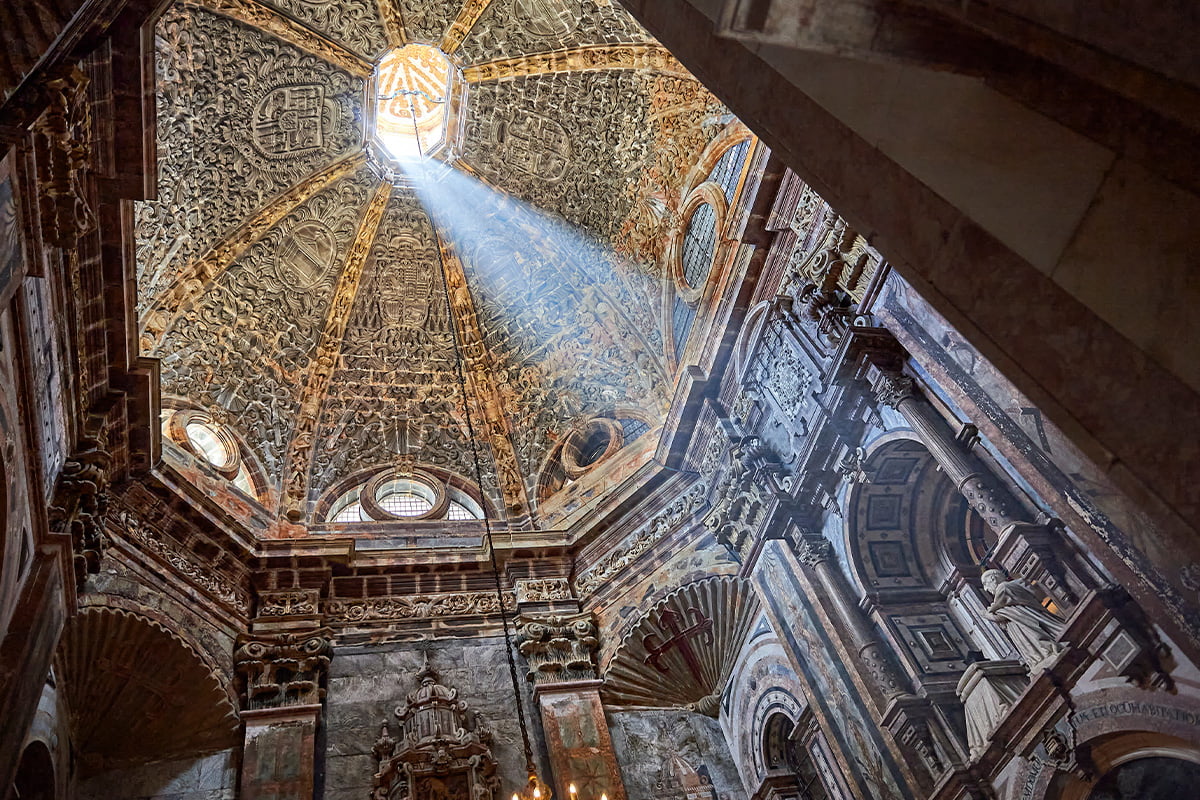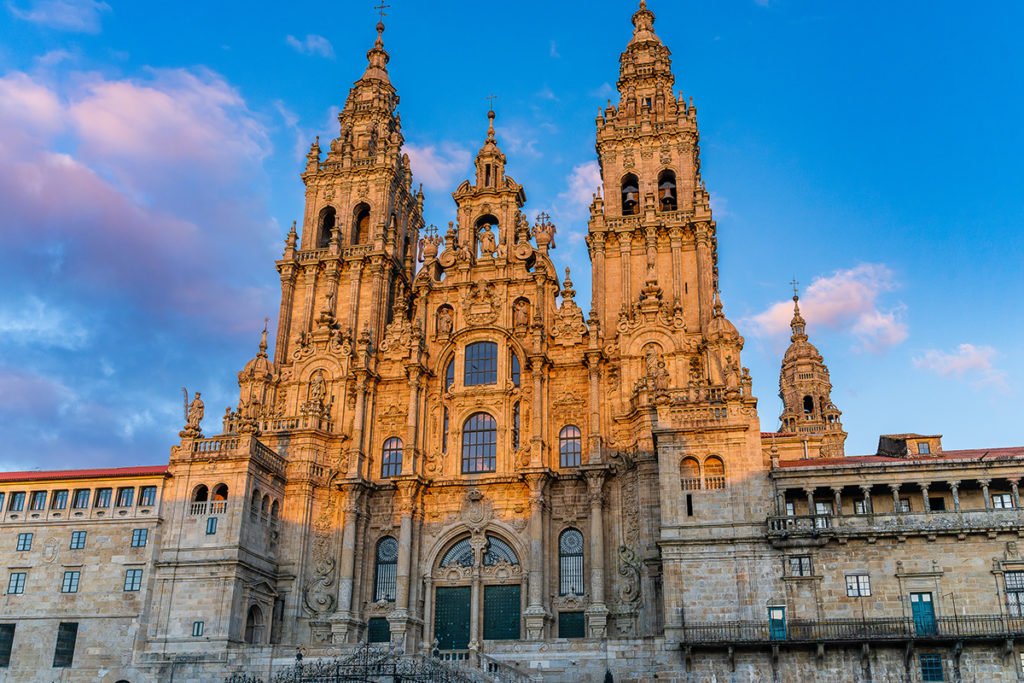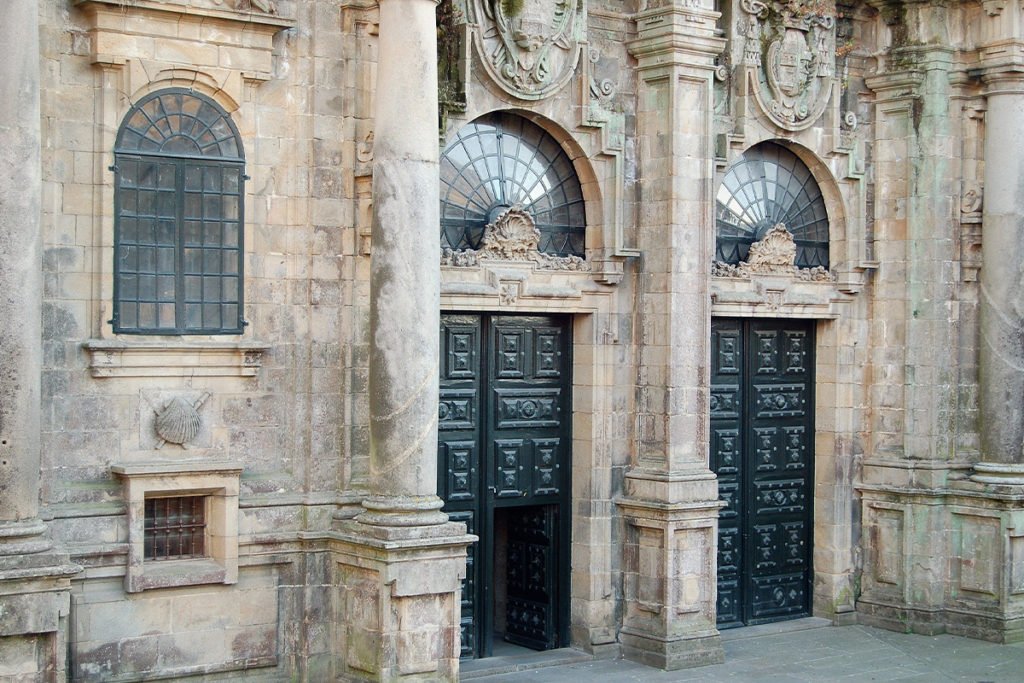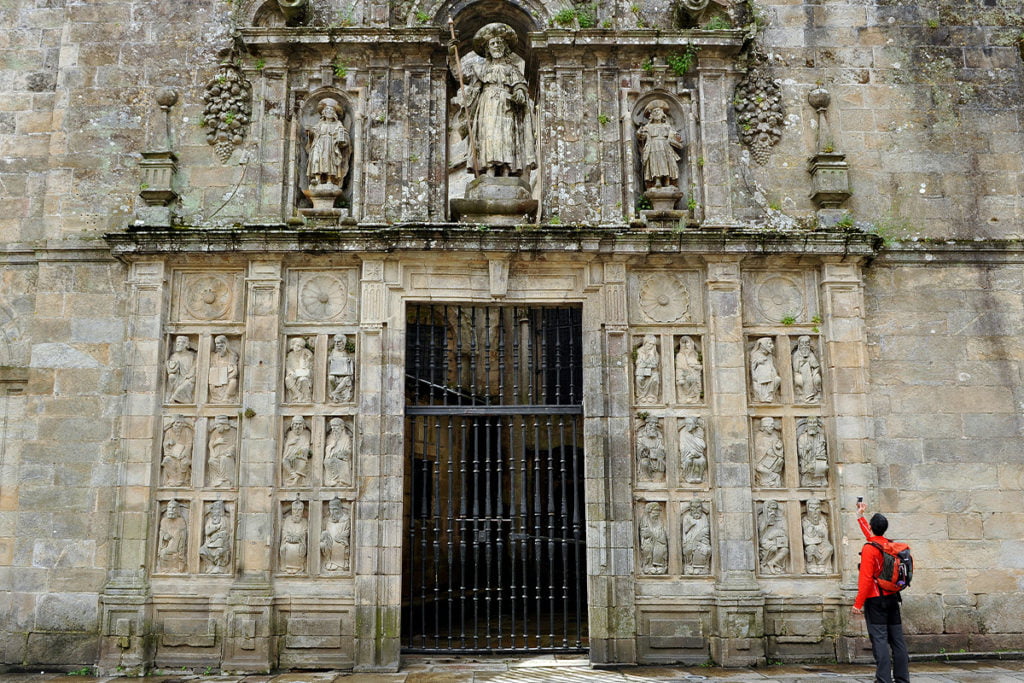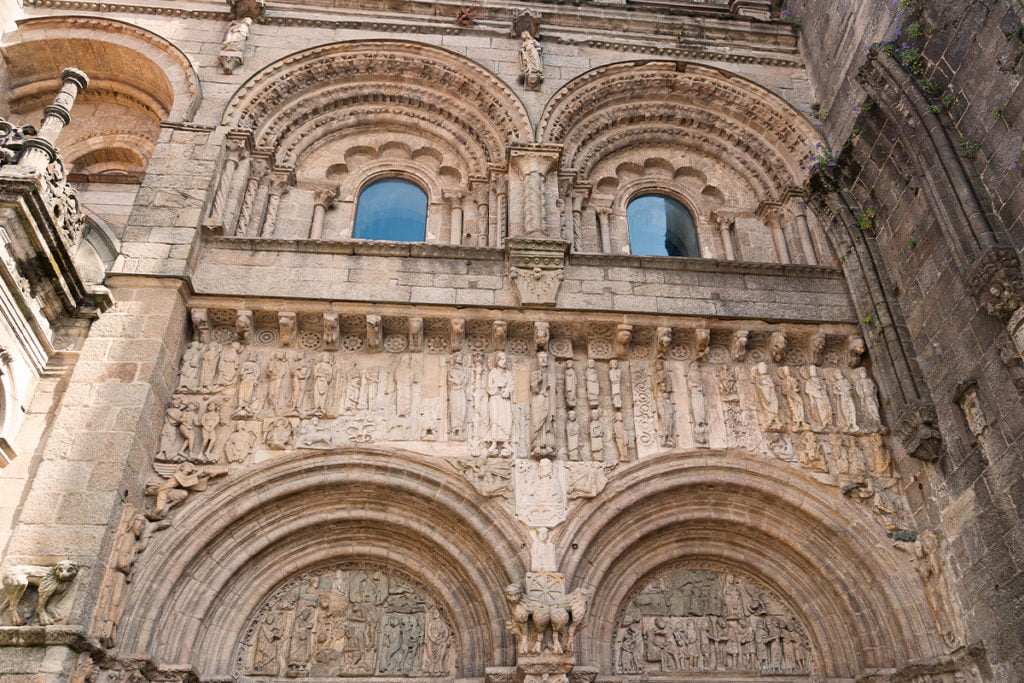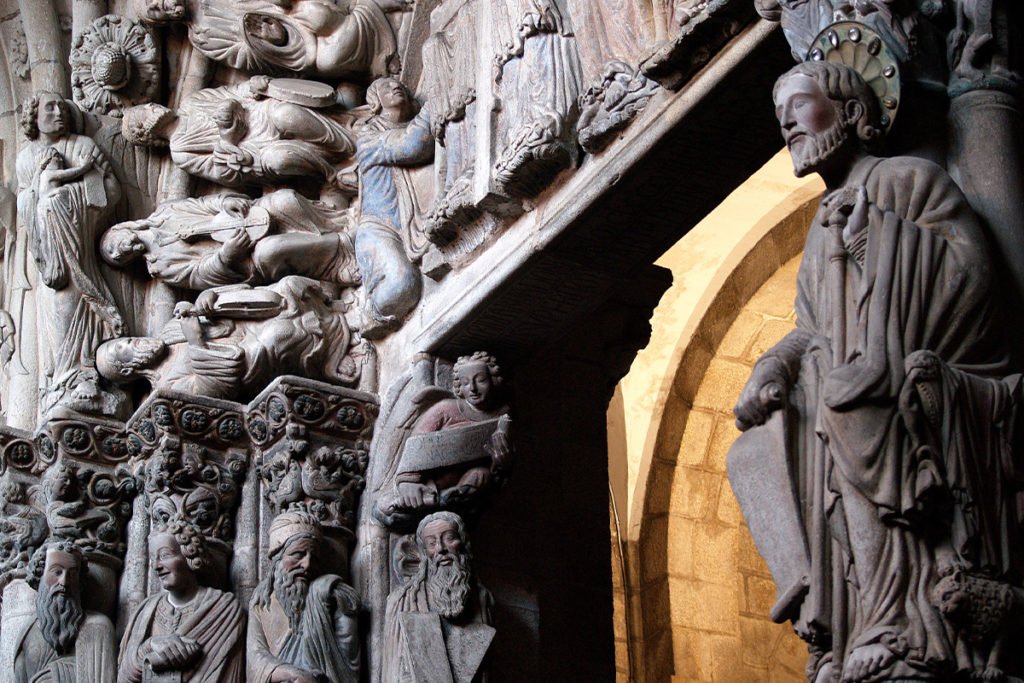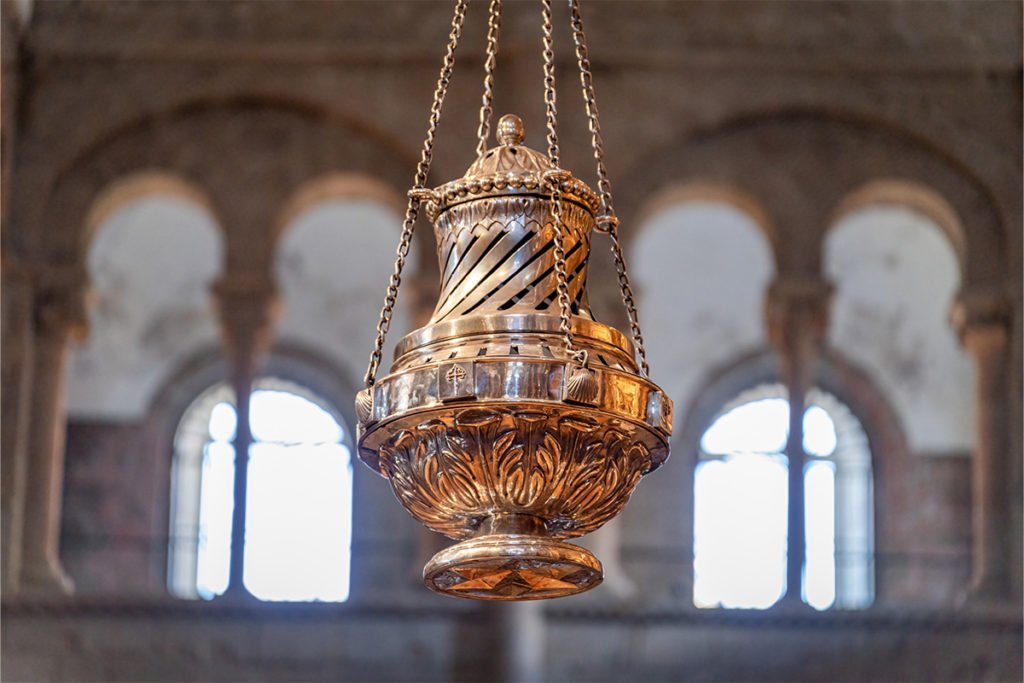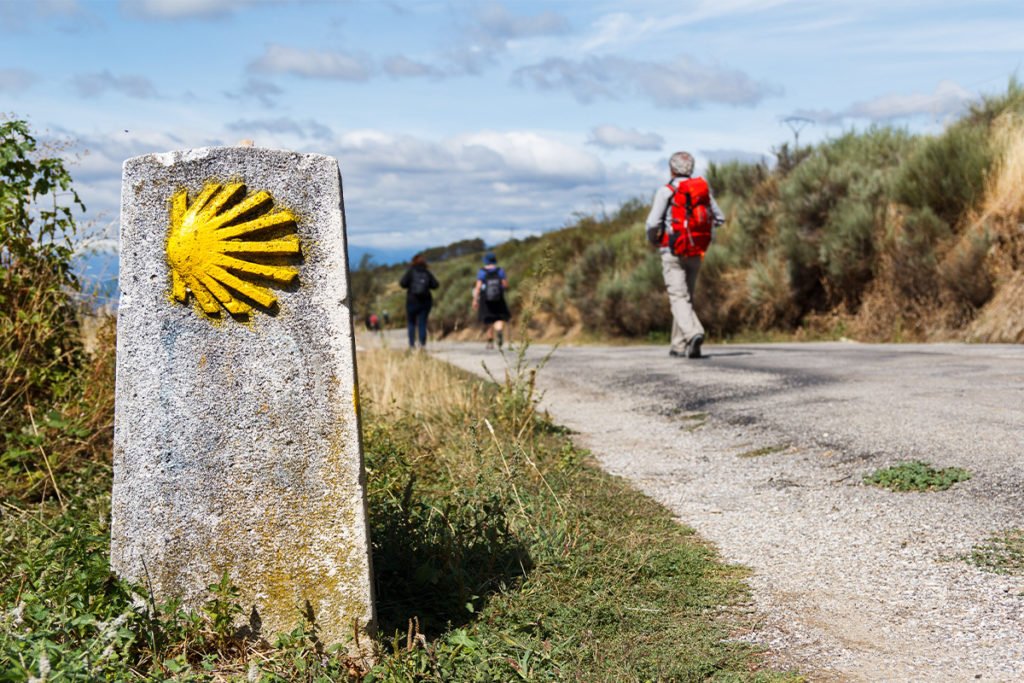In the case of some monuments, you don’t have to be a great expert in sacred art to say that you are dealing with a masterpiece. This is also the case here.
The Cathedral of Santiago de Compostela is one of the most important sacred sites in Spain. It inspires respect with its majestic, medieval architecture, which makes a huge impression both from the outside and the inside. Every year, this place is visited by hundreds of thousands of tourists and pilgrims from all over the world, and in 1985 the Cathedral of Santiago de Compostela was inscribed on the UNESCO World Heritage List. Where does such great interest and recognition for this centuries-old monument come from? Let’s see.
Four facades of the cathedral
The construction of the Cathedral of Santiago de Compostela began in 1075, during the reign of Alfonso VI of Castile, and lasted until 1122. Numerous reconstructions, which took place in subsequent eras (mainly in the 16th-18th centuries), mean that today we can see several different styles in the architecture of this church. The best example of this is its facades:
Western Facade (Fachada del Obradoiro)
This is the most characteristic and most frequently photographed view of the cathedral. The attention is drawn to two high towers (76 m), which rise above other buildings in the area and attract attention from afar. Built in the years 1738-1750, the facade is full of ornamentation and numerous sculptural decorations. We will also see figures of St. James the Greater Apostle and his two disciples. From an architectural point of view, this part of the cathedral represents the late Spanish Baroque, which in art is also known as Churriguera style.
INTERESTING FACT: The western facade is also an integral part of the Plaza de Obradoiro, where pilgrims traveling the Camino de Santiago gather.
Northern Facade (Fachada de Azabachería)
This is where the entrance crowning the Way of St. James is located. A characteristic element is the Paradise Portal, which was originally created in 1122 by Bernard. Unfortunately, as a result of a fire in 1758, the entrance was destroyed. Some of the sculptures that were saved were placed on the south facade. The new baroque entrance was designed by Lucas Ferro Caaveiro, and completed by Domingo Lois Monteagudo and Clemente Fernández Sarela in the neoclassical style in 1769.
Eastern Facade (Fachada de la Quintana)
This facade consists of two entrances. The first is Puerta Real (Royal Gate), the construction of which was completed in 1700. Its characteristic elements are high columns and sculptural decorations depicting, among others, war trophies. The name “Royal Gate” itself came from the fact that only the kings of Spain entered through this entrance.
The second entrance is Puerta Santa (Holy Gate), which is opened only in the Jubilee Year. It can be easily recognized thanks to the large sculptures depicting St. James and his disciples, which were placed just above the entrance.
Southern Facade (Fachada de las Platerías)
This is the only Romanesque facade that has been preserved in the Santiago de Compostela Cathedral to this day. It was built in the years 1103-1117, and in subsequent years it was enriched with elements from other parts of the cathedral. Attention is drawn to two portals full of bas-reliefs depicting scenes of Christ’s temptation in the desert, the Adulteress, passion scenes and other symbolic biblical representations.
INTERESTING FACT: The southern facade, sometimes called Puerta de las Platerías, is located at the Plaza de las Platerías, where the clock tower (Torre del Reloj) is also located.
Portal of Glory
This is one of the most beautiful examples of 12th-century Romanesque architecture and sculpture. The Portal of Glory was built in the years 1168-1188, and Master Mateo was behind its creation. The iconography of the portal mainly refers to the Apocalypse of St. John. We will see here, among others, depictions of Christ the Redeemer, the four evangelists, angels and the Elders of the Apocalypse with instruments.
Botafumeiro Incense Burner
The Cathedral of Santiago de Compostela is a place where everything takes on a majestic character. It is no different with the local incense burner. The admiration is aroused not only by its considerable age (it was created in 1851), but above all by its size.
Botafumeiro, as the inhabitants of Galicia call it, measures 160 cm, weighs 60 kg, and it takes about 40 kg of charcoal and incense to light it. When swung, the gigantic censer reaches a speed of up to 60 km/h, and the smoke coming out of it reaches every corner of the cathedral! Today it has a symbolic dimension, because it allows everyone gathered in the church to actively participate in the Eucharist. In the past, the censing of the church also had a practical character, because it allowed to eliminate the unpleasant smell of the pilgrims’ dirty clothes, who had been wandering to Santiago de Compostela for weeks.
The mechanism used to swing the Botafumeiro comes from 1604 and is located under the dome of the cathedral. The best way to see it in action is to visit the cathedral in the Holy Year of St. James (the nearest one falls in 2021), when Botafumeiro is used during every Sunday mass. In other years, the censer is used only a dozen or so times a year:
- January 6,
- Easter Sunday,
- on the Feast of the Ascension of Jesus,
- on the Feast of Pentecost,
- May 23,
- July 25,
- August 15,
- November 1, during the Feast of Jesus Christ, King of the Universe,
- December 8,
- December 25,
- December 30
The way of Saint James
Historical architecture and historical richness are one thing, but what really makes the Cathedral of Santiago de Compostela unique is the pilgrimage route of St. James (Spanish: Camino de Santiago). It has existed for over 1000 years, and in the Middle Ages it was traveled by up to a million people a year! Where did such a great interest come from?
Once the reasons were purely religious. Pilgrims traveled the Camino de Santiago as part of penance or in specific intentions. Today, the legendary trail attracts not only believers, but also people who want to experience the adventure of a lifetime. Regardless of the motives, everyone is united by one goal: reaching the cathedral in Santiago de Compostela.
Who was Saint James the Greater Apostle?
Saint James the Elder is one of the 12 apostles who converted the Celts to Christianity in the areas of today’s Galicia. After his martyr’s death, his body was released into the sea, but a miracle caused the hosts of angels to bring it back to the shore. After burying the saint, his grave was forgotten. In 813 (again thanks to a miracle – this time a shower of stars) the grave was found, and the first church was built in its place.
Practical info
- It is best to buy tickets to Cathedral of Santiago de Compostela in advance. You will then avoid standing in line and you will avoid the risk that all tickets have been sold out.
- Address: Praza do Obradoiro, s/n, 15704 Santiago de Compostela, A Coruña, Spain
- Buy tickets on GetYourGuide

